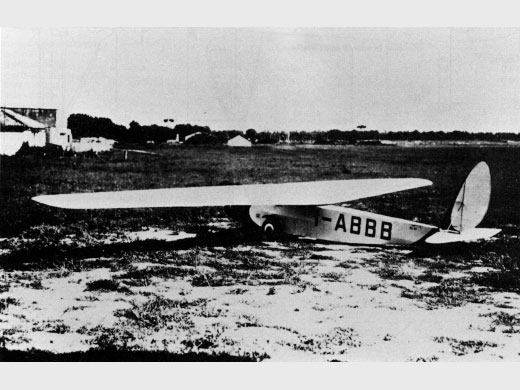
Romeo Ro-35
Autre nom (ou nom en langue originelle) : IMAM Ro-35| DONNÉES GÉNÉRALES |
| Année du premier vol (ou de design, si seul projet) |
1933 |
| Pays | Italie |
| Designer(s) | Officine Meccaniche Romeo |
| Premier constructeur | Industrie Meccaniche e Aeronautiche Meridionali, Napoli (Italia) |
| Type d'appareil | Planeur |
| Fonction | Expérimental |
| SPÉCIFICATIONS TECHNIQUES |
| Envergure | 14.5 m |
| Longueur | 6.49 m |
| Hauteur | 1.11 m |
| Allongement | 13.3 |
| Surface alaire | 15.8 m2 |
| Profil aile | -- |
| Masse à vide | 100 kg |
| Masse maxi | 170 kg |
| Charge alaire | 10.8 kg/m2 |
| Vitesse mini | 35 km/h |
| Vitesse maxi | -- |
| Finesse maxi | 16 |
| Taux de chute mini | -- |
| Nb sièges | 1 |
| Structure | Bois et toile |
AUTRES INFORMATIONS
| Constructeur(s) |
| ||||||
| Infos techniques | The Ro.35 was a cantilever high wing monoplane with the wing mounted on top of the fuselage without dihedral. The one piece wing was built around a single spar and was plywood skinned forward of the spar forming a torsion resistant D-box. The rest was fabric covered. In plan the wing was straight tapered and had rounded tips.[2] The Ro.35 had a simple rectangular cross-section, wooden framed fuselage, skinned with plywood forward and fabric aft. At the nose the sides curved around but the upper and lower surfaces did not meet, giving the Roma a square nosed side view. The open cockpit was set into the wing leading edge, the pilot protected by a small windscreen. Its rear fuselage tapered in plan to the tail, where a short, narrow fin supported a very curved, tall rudder. The tailplane was mounted on the fuselage at the foot of the fin. It too was narrow and with its elevator was straight tapered and round tipped. The horizontal surfaces were fabric covered; all the control surfaces were unbalanced. The curved lower rudder edge left clearance for elevator movement. The glider was unusual in having the option of a fixed, narrow track wheeled undercarriage, with a steel axle passing through the lower fuselage. This could be discarded in favour of a more conventional skid. There was a small tail skid for use with either option. | ||||||
| Histoire résumée | Seul planeur conçu en Italie du sud, il porte le nom de l'industriel (et sénateur) Nicola Romeo, surtout connu par la marque d'automobiles Alfa-Romeo. Le planeur fut construit par la firme IMAM - Industrie Meccaniche e Aeronautiche Meridionali (branche aéronautique de la société Officine Ferroviarie Meridionali), installé à Naple (Italie). Le Ro-35 effectua son premier vol en 1933 et fut utilisé par le club de vol à voile de Naples (aérodrome de Capodichino). | ||||||
| Liens personnalités | Pas de personnalité associée. | ||||||
| Compléments docs |
SOURCES DOCUMENTAIRES
| Liens WEB | Site : Wikipedia . Note + specs. (2014-01-15 CL) |
| Livres | Alianti italiani par PAJNO, Vittorio (2000) [p. 186. Photo]. Alianti Italiani d'Epoca par PEDRIELLI, Vincenzo (2011) [p. 182-183. Note + 3 photos + plan 3 vues + specs]. Tecnica del Volo a Vela par BARTOCCI, E. & RIGHETTI, M. (1936) [p. XVII-XIX, XXI. 2 photos + plan 3 vues]. |
| Autres sources | Le Romeo 35 à longeron "Monospar", Les Ailes n° 532, 18/08/1932. |

Team J2mcL © 2003 -
- Pages optimisées pour Mozilla Firefox

